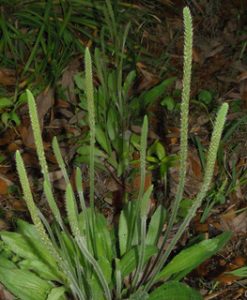
Can the antibiotics crisis be solved with ancient remedies? Check out this NY Times article
A branch of botanists called Ethnobotany is a socially obscure branch of the social sciences that studies what plants ancient indigenous people used for their food, clothing, shelter and even medicinally.
Many foreigners who come her trust indigenous plants that come from where they grew up more than what we offer pharmacologically, and many of these plants have healthy affects on us, and often can do a better job than medications that are synthesized in a lab.
From the standpoint of the pharmaceutical industry, they are now looking at how indigenous plants may help them in developing new treatments for problems we suffer from and even new antibiotics that have not been discovered yet.
Check out this fascinating article in the NY Times
Could Ancient Remedies Hold the Answer to the Looming Antibiotics Crisis?
One researcher thinks the drugs of the future might come from the
past: botanical treatments long overlooked by Western medicine.
By FERRIS JABRSEPT. 14, 2016
On a warm, clear evening in March, with the sun still hanging above the horizon, Cassandra Quave climbed aboard a jalape̱o-green 4-by-4 and started to drive across her fatherӪs ranch in Arcadia, Fla. Surveying the landscape, most people would have seen a homogenous mat of pasture and weeds punctuated by the occasional tree. Quave saw something quite different: a vast botanical tapestry, rich as a Persian rug. On a wire fence, a Smilax vine dangled menacingly pointed leaves, like a necklace of sharkӪs teeth. Beneath it, tiny wild daisies and mint ornamented the grass with pink tassels and purple cornets. Up above, on the sloping branches of oak trees, whiskery bromeliads, Spanish moss and the gray fronds of resurrection fern tangled in a miniature jungle all their own.
Each of these species intrigued Quave enough to merit a pause, a verbal greeting, a photo. An ethnobotanist based at Emory University in Atlanta, Quave, 38, has an unabashed fondness for all citizens of the kingdom plantae. But on this evening, her attention lingered on certain species more than others: those with the power to heal, with the potential to help prevent a looming medical apocalypse.
Read more